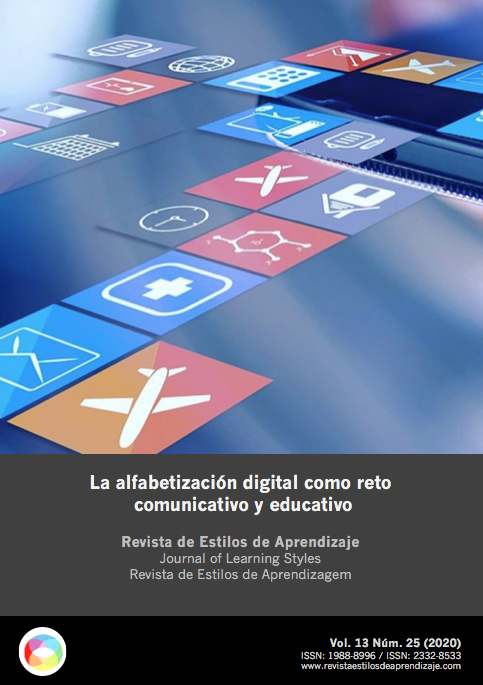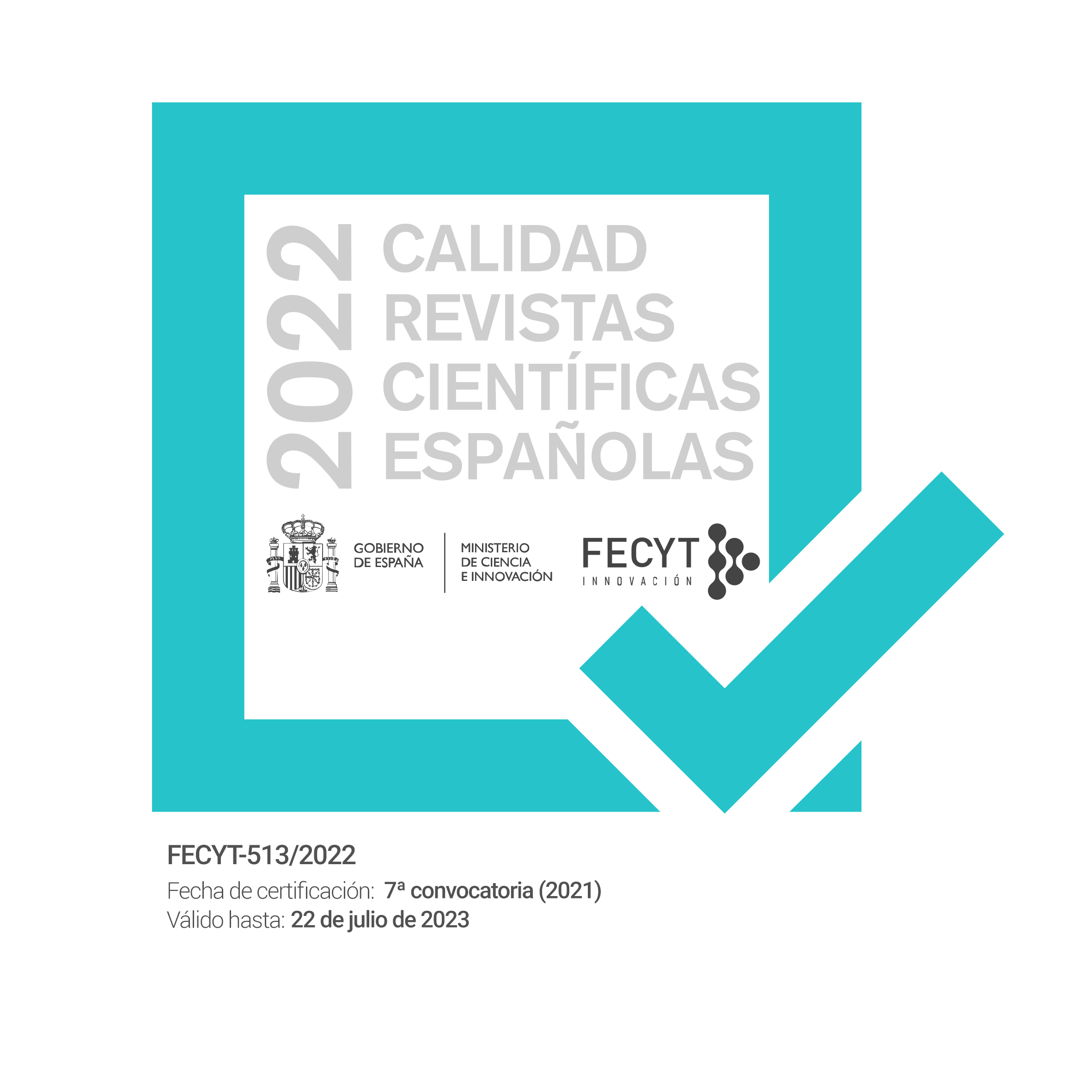Visual literacy as a defence against false news
Visual literacy as a defense against fake news
DOI:
https://doi.org/10.55777/rea.v13i26.2012Keywords:
Visual Literacy, Visual Education, Fake News, Graphic Manipulation, Retouched ImagesAbstract
Abstract. The excess of photographic images in the different media and their fraudulent use in spreading fake news can distort reality so that we are not able to differentiate manipulated images from those that haven't been retouched. We propose a methodology to detect false content in the image, through the analysis from a selection of a false photographic documents classified as viral. These visual documents were shown to two subject groups, a first group with high visual education, and a second group with a lower visual literacy degree, in order to determine whether there are differences. The results show that there is a correlation between visual education and the detection of manipulated or retouched photographic images, concluding that visual literacy and knowledge is a fundamental tool for the defense against manipulated photographic content, as well as an indispensable element to develop a set of skills that allows greater effectiveness in its detection and location.
Downloads
References
Acaso, M. (2009). El lenguaje visual. Madrid, España: Paidós.
Acaso, M. (2012). Pedagogías Invisibles. Madrid, Esapaña: La Catarata.
Aguaded I., Marín, I., y Díaz, E. (2015) La alfabetización mediática entre estudiantes de primaria y secundaria en Andalucía (España). Ried 18 (2), 275-298.
Amorós García, M. (2017). Fake news. La verdad de las noticias falsas. Barcelona, España: Plataforma Editorial.
Bamford, A. (2009). El factor ¡Wuau! El factor de las artes en educación. Barcelona, España: Octaedro.
Berger, J. (2010). Modos de ver. Barcelona, España: Gustavo Gili.
Cata, J. (Coord.) (2001). La educación Plástica y visual hoy: Educar la mirada, la mano y el pensamiento. Barcelona, España: Graó.
Debray, R. (1994). Vida y muerte de la imagen. Historia de la mirada en Occidente. Buenos Aires, Argentina: Ediciones Paidós Ibérica.
Diezhandino, M. P. (2005). España, periodistas y medios de comunicación en el escenario del siglo XXI. Que la esperanza sea lo último que se pierda. Revista Telos. (63).
Eisner, E. (2010). El arte y la creación de la mente: el papel de las artes visuales en la transformación de la conciencia. Barcelona, España: Paidós.
Flores Vivar, J. M. (2017). Los elementos del ciberperiodismo. Madrid, España: Síntesis.
García-Ruiz, R., Ramírez, A. y Rodríguez, M. M. (2014). Educación en alfabetización mediática para una nueva ciudadanía prosumidora [media literacy education for a new prosumer citizenship]. Comunicar, (43), 15-23. doi: 10.3916/c43-2014-01.
García, A. (2020). Google lanza una herramienta que te permite saber si una foto es falsa. Madrid, España: ADSLZone. Recuperado de https://bit.ly/2NX69wo
Goleman, D. (1999). La práctica de la inteligencia emocional. Barcelona, España: Kairós.
Gutiérrez, A. (2003). Alfabetización digital: Algo más que ratones y teclas. Barcelona, España: Gedisa.
Gutiérrez, A. y Tyner, K. (2012). Educación para los medios, alfabetización mediática y competencia digital [media education, media literacy and digital competence]. Comunicar, (38), 31-39. doi:10.3916/c38-2012-02-03.
Hernández Hernández, F. (2007). Espigador@s de la cultura visual. Barcelona, España: Octaedro.
Lozano, R. (2011) De las TIC a las TAC: tecnologías del aprendizaje y del conocimiento. Anuario Thinkepi, V. 5, pp. 45-47.
Marín Viadel, R. (2012). Metodologías artísticas. Sevilla, España: Aljibe.
Nica, A. (2020). La Policía presenta la primera guía para no ser manipulado por las ‘fake news’. Madrid, España: El mirador de Madrid. Recuperado de https://bit.ly/3goUNxk
Rodríguez, S. D., y González, M. F. (2018). Análisis de la implantación de las TIC en la educación secundaria. Tendencias tecnológicas actuales. Revista De Estilos De Aprendizaje, 11(22). Recuperado de http://revistaestilosdeaprendizaje.com/article/view/1082
Suchodolski, B. (1979). Tratado de Pedagogía. Barcelona, España: Península.
Zambrano Acosta, J., Arango Quiroz, L., y Lezcano Rueda, M. (2018). Estilos de aprendizaje, estrategias de aprendizaje y su relación con el uso de las TIC en estudiantes de educación secundaria. Revista De Estilos De Aprendizaje, 11(21). Recuperado de http://revistaestilosdeaprendizaje.com/article/view/
Downloads
Published
How to Cite
Issue
Section
License
By submitting the original, the author(s) declare that they are aware of and accept, in full, the privacy policy as well as the copyright of the Learning Styles Magazine.
The Learning Styles Magazine offers free and open access to its content, completely free of charge, in order to bring scientific research to its readers and society in general. All digital contents are free and open access and are published under a Creative Commons license:

Rights are granted under the Creative Commons Reconocimiento-NoComercial-SinObraDerivada 4.0 Internacional (CC-BY-NC-ND 4.0)
The Learning Styles Magazine is an open access journal. Publication of articles or reviews in the Journal does not entitle you to any remuneration. For authors as well as readers, the journal is free Creative Commons Reconocimiento-NoComercial-SinObraDerivada 4.0 Internacional (CC-BY-NC-ND 4.0).
With this licence, the reproduction and dissemination of the contents of the magazine for educational, social and knowledge transmission purposes is permitted, without any profit motive in mind, provided that the source and authorship are not modified. The licence granted to Learning Styles Magazine allows the copying and distribution of the magazine's contents, as long as the authorship of the work is recognised, correctly specifying the author and the publishing entity. The work may not be used for commercial purposes, nor may it be altered, transformed or generated from this work.
The publication of articles or reviews in the Journal does not give the right to any remuneration.
The Learning Styles Journal invites the author/authors to increase the visibility and scope of their articles published by re-disseminating them in:
- Web spaces and personal networks, as well as in scientific meetings and forums
- Open institutional archives in Universities, educational repositories and Research Centres.
- Academic and scientific networks (Researchgate, Academia.edu, Plubons, etc.)
All these spaces and publications must include all the bibliographic data of the publication.

























